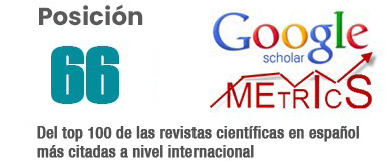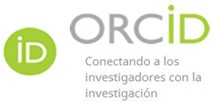Web system for the creation of class schedules at the Metropolitan University of Ecuador
DOI:
https://doi.org/10.62452/8a15ce53Keywords:
Web system, schedules, functional requirements, non-functional requirementsAbstract
The research focused on the development of a web system for creating class schedules for the Metropolitan University of Ecuador-UMET. To do this, first, the functional and non-functional requirements of the system will be determined, to subsequently proceed with its development and finally carry out its quality validation. The methodology was framed in a quantitative approach, descriptive level, non-experimental-cross-sectional design and type of field research. The population and sample consisted of 13 career directors and three (3) experts in the software area. The data collection technique used was the survey, and as instruments two questionnaires that made it possible to identify, firstly, the requirements for the operation of the software and consisted of 16 questions, and secondly, the evaluation of the quality of the web system that was constituted. for 10 questions, both with a dichotomous response scale (Yes/No). The validation was carried out based on the judgment of three (3) experts and the reliability was determined for both questionnaires by the Kuder Richardson coefficient (KR-20), yielding values of 0.974 and 0.741 respectively, reflecting good reliability. 7 (seven) functional requirements and 9 (nine) non-functional requirements were obtained, which allowed the development of the web system concatenated with the real needs, obtaining an efficient and robust system whose quality was evaluated by experts. The system obtained made it possible to automate the process, reducing the workload and time used to create class schedules.
Downloads
References
Angular. (2022). The web development framework for building the future. https://angular.io/
Baquerizo, J. (2021). Aplicación web para la automatización y gestión de horarios de clases mediante algoritmos basados en el modelo de programación lineal en la escuela ‘Lic. Angélica Villón Lindao. (Trabajo de titulación). Universidad Estatal Península de Santa Elena.
Gobierno de España. (2022). Real Decreto 95/2022 por el que se establece la ordenación y las enseñanzas mínimas de la Educación Infantil. https://www.boe.es/buscar/pdf/2022/BOE-A-2022-1654-consolidado.pdf
Huanca, J. (2020). Sistema de información con arquitectura MVC para la recaudación tributaria por obras públicas de pistas y veredas de la municipalidad provincial de Puno. (Tesis de licenciatura). Universidad Nacional del Altiplano
IBM. (2021). IBM. Obtenido de www.ibm.com
Marqués, M. (2011). Bases de datos. Publicacions de la Universitat Jaume I.
Nazareno, R., Leone, H., & Gonnet, S. (2013). Trazabilidad de procesos ágiles: un modelo para la trazabilidad de procesos Scrum. (Poenncia). XVIII Congreso Argentino de Ciencias de la Computación. Universidad Nacional de La Plata, Argentina.
Pressman, R., & Maxim, B. (2019). Software Engineering: A Practitioner's Approach. Mc-Graw Hill.
Real Academia Española. (2021). Diccionario de la Real Academia Española. https://www.rae.es/
Riehle, D. (2007). Framework Design: A Role Modeling Approach. (Tesis doctoral). SWISS Federal Institute of Technology Zurich.
Sommerville, I. (2019). Engineering Software Products: An Introduction to Modern Software Engineering. Pearson.
Downloads
Published
Issue
Section
License
Copyright (c) 2024 Tonysé de la Rosa-Martín, Jorge Luis León-González (Autor/a)

This work is licensed under a Creative Commons Attribution-NonCommercial-ShareAlike 4.0 International License.
Authors who publish in Revista Metropolitana de Ciencias Aplicadas (REMCA), agree to the following terms:
1. Copyright
Authors retain unrestricted copyright to their work. Authors grant the journal the right of first publication. To this end, they assign the journal non-exclusive exploitation rights (reproduction, distribution, public communication, and transformation). Authors may enter into additional agreements for the non-exclusive distribution of the version of the work published in the journal, provided that acknowledgment of its initial publication in this journal is given.
© The authors.
2. License
The articles are published in the journal under the Creative Commons Attribution-NonCommercial-ShareAlike 4.0 International License (CC BY-NC-SA 4.0). The terms can be found at: https://creativecommons.org/licenses/by-nc-sa/4.0/deed.en
This license allows:
- Sharing: Copying and redistributing the material in any medium or format.
- Adapting: Remixing, transforming, and building upon the material.
Under the following terms:
- Attribution: You must give appropriate credit, provide a link to the license, and indicate if any changes were made. You may do this in any reasonable manner, but not in any way that suggests the licensor endorses or sponsors your use.
- NonCommercial: You may not use the material for commercial purposes.
- ShareAlike: If you remix, transform, or build upon the material, you must distribute your creation under the same license as the original work.
There are no additional restrictions. You may not apply legal terms or technological measures that legally restrict others from doing anything the license permits.




